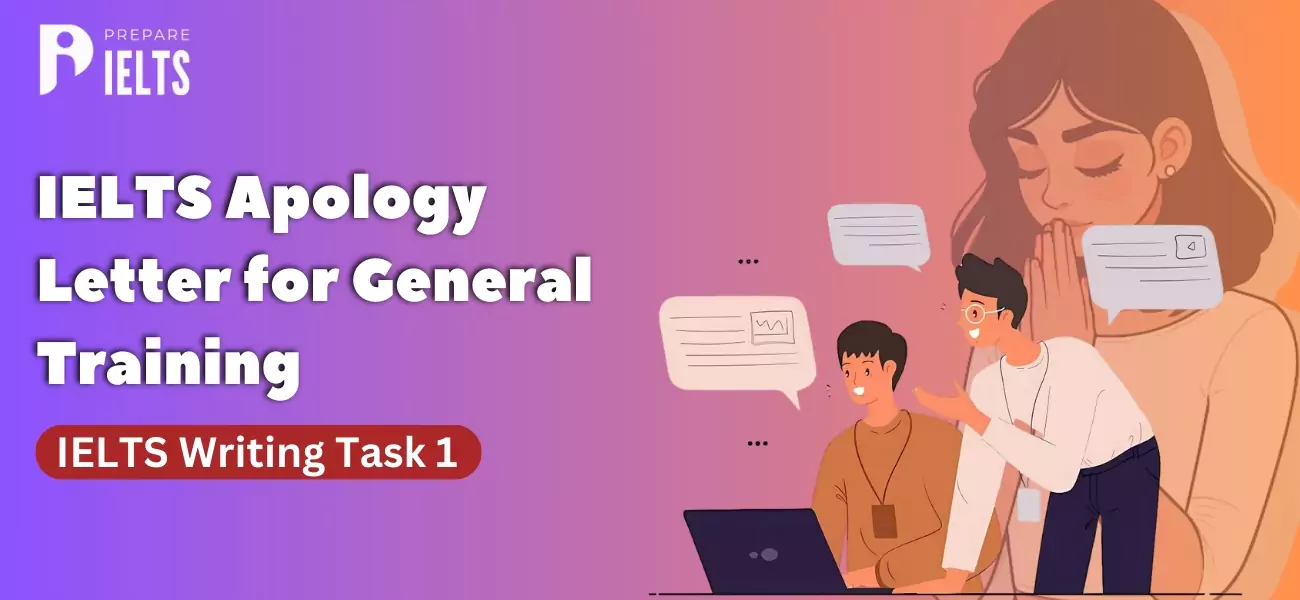
Overview
The 'Innovation of Grocery Stores' is a crucial topic in the academic reading passage of the IELTS Reading section. It's a popular topic that often appears in the test and includes various types of questions.
If you haven't prepared for the 'Innovation of Grocery Stores' topic yet, don’t worry! Prepare IELTS Exam (PI) is here to assist you. Our comprehensive blog includes the passage and related questions, designed to enhance your comprehension and reading skills, and ultimately, your IELTS score. Let’s read the blog and improve your reading skills to score high in IELTS.
The Innovation of Grocery Stores - IELTS Academic Reading Passage
-
At the beginning of the 20th century, grocery stores in the United States were full-service. A customer would ask a clerk behind the counter for specific items, and the clerk would package the items, which were limited to dry goods. If they want to save some time, they have to ask a delivery boy or themselves to send the note of what they want to buy to the grocery store first and then go to pay for the goods later. These grocery stores usually carried only one brand of each good. There were early chain stores, such as the A&P Stores, but these were all entirely full-service and very time-consuming.
-
In 1885, a Virginia boy named Clarence Saunders began working part-time as a clerk in a grocery store when he was 14 years old and quit school when the shopkeeper offered him full-time work with room and board. Later he worked in an Alabama coke plant and a Tennessee sawmill before he returned to the grocery business. By 1900, when he was nineteen years old, he was earning $30 a month as a salesman for a wholesale grocer. During his years working in grocery stores, he found that it was very inconvenient and inefficient for people to buy things because more than a century ago, long before there were computers, shopping was done quite differently than it is today. Entering a store, the customer would approach the counter (or wait for a clerk to become available) and place an order, either verbally or, as was often the case for boys running errands, in the form of a note or list. While the customer waited, the clerk would more behind the counter and throughout the store, select the items on the list – some form shelves so high that a long-handled grasping device had to be used – and bring them back to the counter to be tallied and bagged or boxed. The process might be expedited by the customer calling or sending in the order beforehand or by the order being handled by a delivery boy on a bike, but otherwise, it did not vary greatly. Saunders, a flamboyant and innovative man, noticed that this method resulted in wasted time and expense, so he came up with an unheard-of solution that would revolutionise the entire grocery industry: he developed a way for shoppers to serve themselves.
-
So in 1902, he moved to Memphis, where he developed his concept to form a grocery wholesale cooperative and a full-service grocery store. For his new “cafeteria grocery”, Saunders divided his grocery into three distinct areas: 1) A front “lobby” forming an entrance and exit and checkouts at the front. 2) A sales department, which was specially designed to allow customers to roam the aisles and select their own groceries. Removing unnecessary clerks, creating elaborate aisle displays, and rearranging the store to force customers to view all of the merchandise and over the shelving and cabinets units of the sales department were “galleries” where supervisors were allowed to keep an eye on the customers while not disturbing them. 3) another section of his store is the room only allowed for the clerks, which was called the “stockroom” or “storage room”, where large refrigerators were situated to keep fresh products from being perishable. The new format allowed multiple customers to shop at the same time and led to the previously unknown phenomenon of impulse shopping. Though this format of the grocery market was drastically different from its competitors, the style became the standard for the modern grocery store and later supermarket.
Also Check: How do we raise our CRS score?
-
On September 6, 1916, Saunders launched the self-service revolution in the USA by opening the first self-service Piggly Wiggly store, at 79 Jefferson Street in Memphis, Tennessee, with its characteristic turnstile at the entrance. Customers paid cash and selected their own goods from the shelves. It was unlike any other grocery store of that time. Inside a Piggly Wiggly, shoppers were not at the mercy of shop clerks. They were free to roam the store, check out the merchandise and get what they needed with their own two hands and feet. Prices on items at Piggly Wiggly were clearly marked. No one pressured customers to buy milk or pickles. And the biggest benefit at the Piggly Wiggly was that shoppers saved money. Self-service was positive all around. “It’s good for both the consumer and retailer because it cuts costs,” noted George T. Haley, a professor at the University of New Haven and director of the Center for International Industry Competitiveness. “If you looked at the way, grocery stores were run previous to Piggly Wiggly and Alpha Beta, what you find is that there was a tremendous amount of labour involved, and labour is a major expense.” Piggly Wiggly cut the fat.
-
Piggly Wiggly and the self-service concept took off. Saunders opened nine stores in the Memphis area within the first year of business. Consumers embraced the efficiency, the simplicity and, most of all, the lower food prices. Saunders soon patented his self-service concept and began franchising Piggly Wiggly stores. Piggly Wiggly ballooned to nearly 1,300 stores by 1923 due to the benefits of self-service and franchising. Piggly Wiggle sold $100 million – worth $1.3 billion today – in groceries, making it the third-biggest grocery retailer in the nation. The company’s stock was even listed on the New York Stock Exchange, doubling from late 1922 to March 1923. Saunders had his hands all over Piggly Wiggly. He was instrumental in the design and layout of his stores. He even invented the turnstile.
-
However, Saunders was forced into bankruptcy in 1923 after a dramatic spat with the New York Stock Exchange, and he went on to create the “Clarence Saunders sole-owner-of-my-name” chain, which went into bankruptcy.
-
Until the time of his death in October 1953, Saunders was developing plans for another automatic store system called the Foodelectric. But the store, which was to be located two blocks from the first Piggly Wiggly store, never opened. But his name was well-remembered along with the name Piggly Wiggly.
Also Check: IELTS Score Required for USA
The Innovation of Grocery Stores - Questions and Answers
Question 1-5
The Reading Passage has seven paragraphs A-G. Which paragraph contains the following information?
Write the correct letter A-G, in boxes 1-5 on your answer sheet.
NB: You may use any letter more than once.
1. How Clarence Saunders’ new idea had been carried out.
2. Introducing the modes and patterns of groceries before his age.
3. Clarence Saunders declared bankruptcy a few years later.
4. Descriptions of Clarence Saunders’ new conception.
5. The booming development of his business.
Answer 1: D
Explanation 1: According to paragraph D, 1st and 2nd line, Saunders opened his first Piggly Wiggly self-service supermarket in 1916. Customers could go around the store, select their own products from the shelves, check the prices, and pay for them, unlike any other grocery store of the era.
Answer 2: A
Explanation 2: In paragraph A, 1st line, and last line, US grocery stores were full-service prior to the establishment of Piggly Wiggly. To get some things packed for a customer, the clerk had to ask for them behind the counter. In order to save time, clients can send the clerk a list of what they wish to buy and then visit the store to pay for the items. The procedure took a while, and the stores were fully full-service.
Answer 3: F
Explanation 3: According to the 1st and the last line of paragraph F, Saunders faced bankruptcy in 1923 as a result of a high-profile dispute with the New York Stock Exchange.
Answer 4: C
Explanation 4: According to 1st line, 2nd line, and last 2 lines of paragraph C, Points 1-3 are descriptions of Saunders' new store. The store was different from its rivals in that it had a lobby for entry, exit, and checkout, aisles for customers to walk down freely, few staff, and many other unique characteristics.
Answer 5: E
Explanation 5: According to the 5th line of paragraph E, By 1923, Piggly Wiggly had around 1,300 stores. It is currently the third-biggest grocery retailer in the United States, with a valuation of $1.3 billion.
Also read an interesting cue cad: Describe your best friend
Question: 6-10
Answer the questions below.
Write ONLY ONE WORD AND/OR A NUMBER from the passage for each answer.
6 When Clarence Saunders was an adolescent, he took a job as a _________ In a grocery store.
7 In the new innovation of the grocery store, most of the clerks’ work before was done by _________
8 In Saunders’ new grocery store, the section where customers finish the payment was called _________
9 Another area in his store which behind the public area, was called the _________, Where only internal staff could access.
10 At _________, where customers were under surveillance.
Answer 6: Clerk
Explanation 6: According to the 1st line of paragraph B, When Clarence Saunders was just 14 years old, he began working part-time as a grocery store cashier.
Answer 7: customers/ shoppers.
Explanation 7: According to 1st line, 2nd line, and last line of paragraph D, With this new grocery store invention, customers could walk around the store, look at the products, choose what they wanted from the shelves, compare pricing, and then purchase the item that best suited their needs. Back then, before the shop workers took on all the jobs, it was unlike any other grocery store.
Answer 8: lobby
Explanation 8: According to the 2nd line and 1st point, Saunders split his Piggly Wiggly business into three sections. He created a "lobby" area for the entrance, payment, and departure processes.
Answer 9: Stockroom
Explanation 9: According to the 3rd point of paragraph C, Only clerks were permitted in another area of the store, known as the "stockroom" or "storage room." Refrigerators were kept in the stockroom to prevent fresh goods from going bad.
Answer 10: Galleries
Explanation 10: According to the 2nd line of paragraph C, Supervisors at Piggly Wiggly used "galleries" to keep a watch on customers without bothering them.
Also read an interesting cue card: Describe your first mobile phone
Questions 11-13
Choose the correct letter, A, B, C, or D. Write your answers in boxes 11-13 on your answer sheet.
11. Why did Clarence Saunders want to propel the innovation of grocery stores at his age?
-
Because he was an enthusiastic and creative man.
-
Because his boss wanted to reform the grocery industry.
-
Because he wanted to develop its efficiency and make a great profit as well.
-
Because he worried about the future competition from the industry.
12. What happened to Clarence Saunders’ first store of Piggly Wiggly?
-
Customers complained about its impracticality and inconvenience.
-
It enjoyed a great business and was updated in the first twelve months.
-
It expanded to more than a thousand franchised stores during the first year.
-
Saunders was required to have his new idea patented and open stores.
13. What was left to Clarence Saunders after his death in 1953?
-
A fully automatic store system opened soon near his first store.
-
The name of his store, the Piggly Wiggly, was very popular at that time.
-
His name was usually connected with his famous shop, the Piggly Wiggly, in the following several years.
-
His name was painted together with the name of his famous store.
Answer 11: C
Explanation 11: According to the 4th line of paragraph B, Saunders was a flamboyant and inventive man who, while working at grocery stores, saw how inconvenient and inefficient it was for customers to make purchases. As a result, he devised a novel solution that would completely transform the grocery sector.
Answer 12: B
Explanation 12: According to the 1st line and 2nd line of paragraph E, Piggly Wiggly and the self-service idea gained popularity. In its inaugural year of operation, Saunders established nine retail locations in Memphis.
Answer 13: C
Explanation 13: According to the 1st line of paragraph G, Both his name and the Piggly Wiggly grocery shop became well-known after his death in October 1953.
Also read: IELTS Writing Task 2: How to write an introduction
Register Now, for a free Mock test - Join Today!
Conclusion
In conclusion, when studying for the IELTS Reading section, it is essential to use trustworthy resources as this is the only way to assess your skills accurately. One of the most complex parts of the test is finishing the IELTS Reading section in the allotted time. Remember that you have just 60 minutes to answer 40 questions. You will need to practice a lot to become an expert at time management and speed for this test.
If you want to get further details or would like to prepare for IELTS, then you can contact Prepare IELTS Exam (PI) expert counsellors for further guidance. Our team of education experts is dedicated to providing you with the best test material and guidance to ace the IELTS exam. You can get a one-on-one counselling session and an IELTS online practice test via our platform. Contact us at info@prepareieltsexam.com or call us at +91 9773398388 for further queries.
Latest Blogs
-

IELTS Score for Canada: Minimum IELTS Requirement for Canada 2025
2024-09-27 18:24:14
-

IELTS Apology Letter for General Training: IELTS Writing Task 1
2024-09-25 16:38:03
-

Minimum IELTS Score for Australia: Student Visas, Universities, and PR in Australia
2024-09-23 18:09:51
-

Common IELTS Speaking Topics with Answers
2024-09-20 18:21:56
-

Describe a foreign culture that you like: IELTS speaking cue card
2024-09-18 16:14:11
-

Describe a Rainy Day IELTS Speaking cue card
2024-09-18 11:11:32
-

Describe a new law you would like to introduce in your country IELTS cue card
2024-09-13 17:17:46
-

Describe your favourite weather: IELTS cue card
2024-09-11 18:01:28
-

Describe an enjoyable journey by public transport: IELTS cue card
2024-09-09 18:05:45
-

Step-by-Step Guide to IELTS Registration in India for the Year 2024 & 2025
2024-09-07 12:59:51


